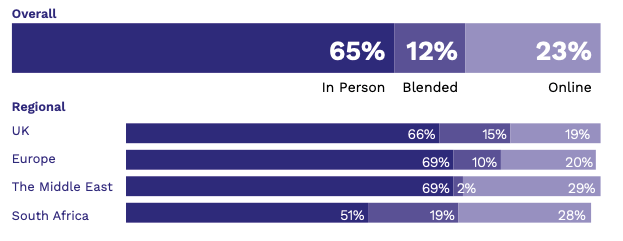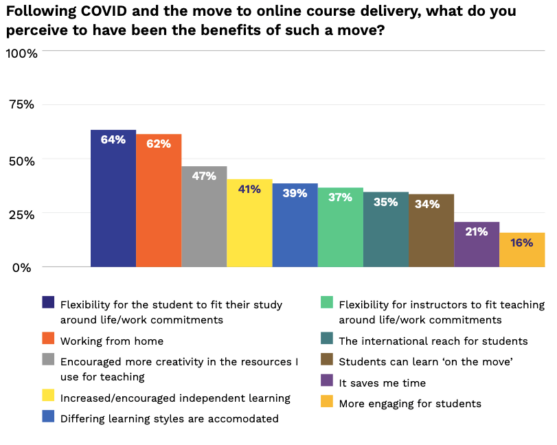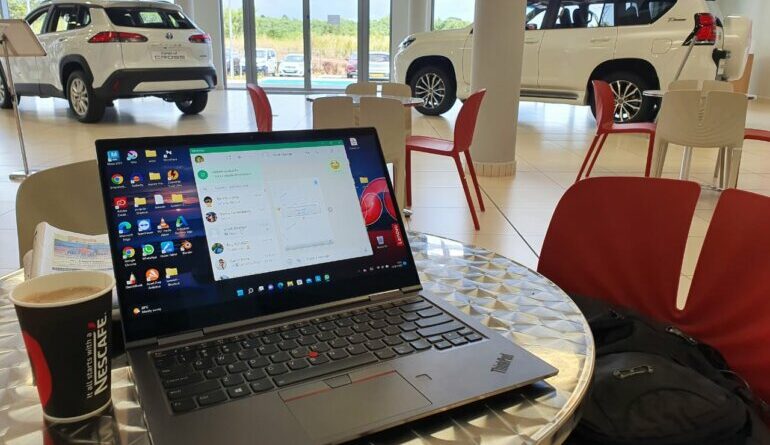SA Leads Europe, UK and Middle East in Online Learning
Research covering higher education (HE) instructors’ priorities and challenges in course delivery conducted by education technology company Cengage EMEA indicates that prior to COVID, South Africa had the highest percentage of learners receiving online or blended learning as their main mode of course delivery compared with the UK, Middle East and Europe.

South Africa had a pre-COVID online and blended learning course delivery of 47% compared with the UK at 34%, Middle East 31% and Europe 30%.
The survey covering 402 HE instructors indicated South Africa having the lowest percentage of In-Person learning at 51% followed by the UK (66%), Europe (69%) and Middle East (69%) prior to COVID.
Overall, two thirds of the higher education instructors were delivering their course content in person pre-COVID, with just a quarter predominantly delivering their course content online.
The results may indicate that SA was moving at a faster pace towards online learning prior to COVID. Another factor could beA, courses are generally much larger, some with thousands taking a course, and therefore online would be better suited for managing very large cohorts.
Resources Used
Also prior to COVID, it was found that a combination of resources to deliver courses was used, with basic digital resources such as eTextbooks, instructor PowerPoints, and instructor notes, being part of this and used by 77% of the overall sample.
In combination with these basic digital resources, instructors representing half the sample were typically using ‘reading from print textbooks’, ‘lecture notes’, ‘practice questions’ and ‘practical sessions’, alongside journal articles. Journal articles were significantly more likely to be used in the UK (62%) comparative to other regions, whilst the UK was also significantly more likely to use published materials (63%) and recorded lectures (38%).
THE REALITY OF DELIVERING COURSES USING DIGITAL CONTENT
Understandably, the enforced move for HE institutions to deliver teaching online to their students over the course of the pandemic met with a range of responses. Through the study Cengage EMEA says it wanted to gauge the perceived benefits and challenges of using digital content to deliver teaching, so that as education providers and content providers, It can work together to further improve any future experience of this for educators and students alike.
Perceived benefits
The sample highlighted many perceived benefits in making the transition to online course delivery. The main benefits of online course delivery highlighted by instructors included:
- flexibility for students (64%)
- instructors being able to work from home (62%)
- encouraging more creativity in resources used by instructors (47%)
- increasing independent learning (41%).
Following COVID and the move to online course delivery, what do you perceive to have been the benefits of such a move?

Perceived drawbacks
When asked about the perceived drawbacks of online course delivery, the most-commonly cited drawback will be recognisable to anyone that endured lockdown in some form. Just over a fifth (21%) claimed that the core drawback was the students missing social interaction. However, they also cited the difficulty in assessing student understanding, which is something that some digital solutions can aid educators with.
Across the regions there was little discrepancy, with the exception of Africa where ‘broadband issues’ was the key concern for a third of instructors, as well as the perception that students find the use of technology stressful. It is likely that these two issues are related.
Potential concerns
Some wariness to moving courses online, particularly at short notice, is understandable. To gauge this the sample were asked: During COVID, which of the following potential concerns, if any, have you had about delivering online courses?
The main concerns expressed were around students’ motivation and engagement, but also instructors had concerns around their own ability to deliver certain aspects and having to potentially rewrite course content, which is presumably a time issue.
Meeting expectations
That said, when asked about the reality of teaching a course using online delivery and resources the experience for just under half of instructors predominantly met expectations. Whilst almost 4 in 10 agreed that teaching a course using online delivery and digital learning resources was a better experience than they had anticipated.

For those that stated that the experience of teaching a course using online delivery and digital learning resources was better than expected, the reasons given included:
- Students actively engage online / better student engagement (15%)
- Flexibility for students / teachers (9%)
- Students / teachers adapted well (7%)
- Technology worked well (7%)
About Cengage
Cengage EMEA is part of Cengage Group, a global education technology company dedicated to removing the barriers to higher education and providing every student with access to quality teaching and learning and a brighter future. Focussed on making education more accessible, sustainable and affordable, its product portfolio includes online learning platforms that offers students everything they need in one place – textbooks, eTextbooks, homework, study and assessment tools, and resources to develop employability skills to help them transition successfully into the hugely competitive global workplace.
Cengage EMEA sells its products and services to over 52 countries throughout Europe, the Middle East and Africa, covering a diverse cultural range, each with its own particular and varied curriculum needs for educational solutions.




